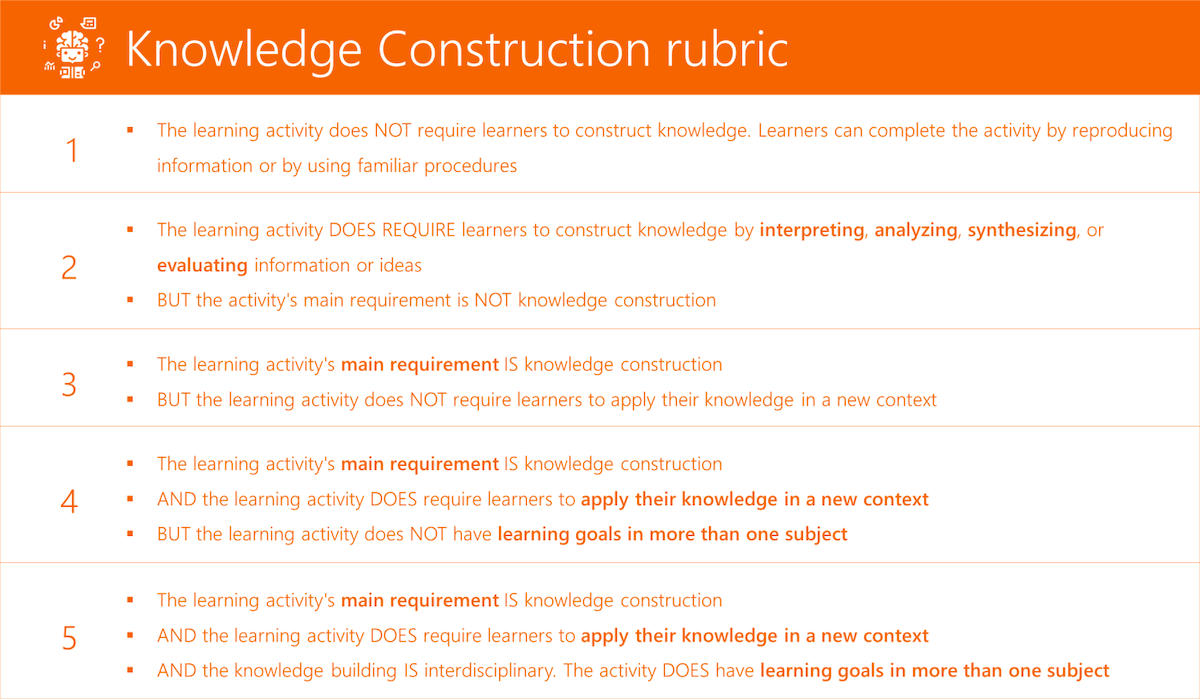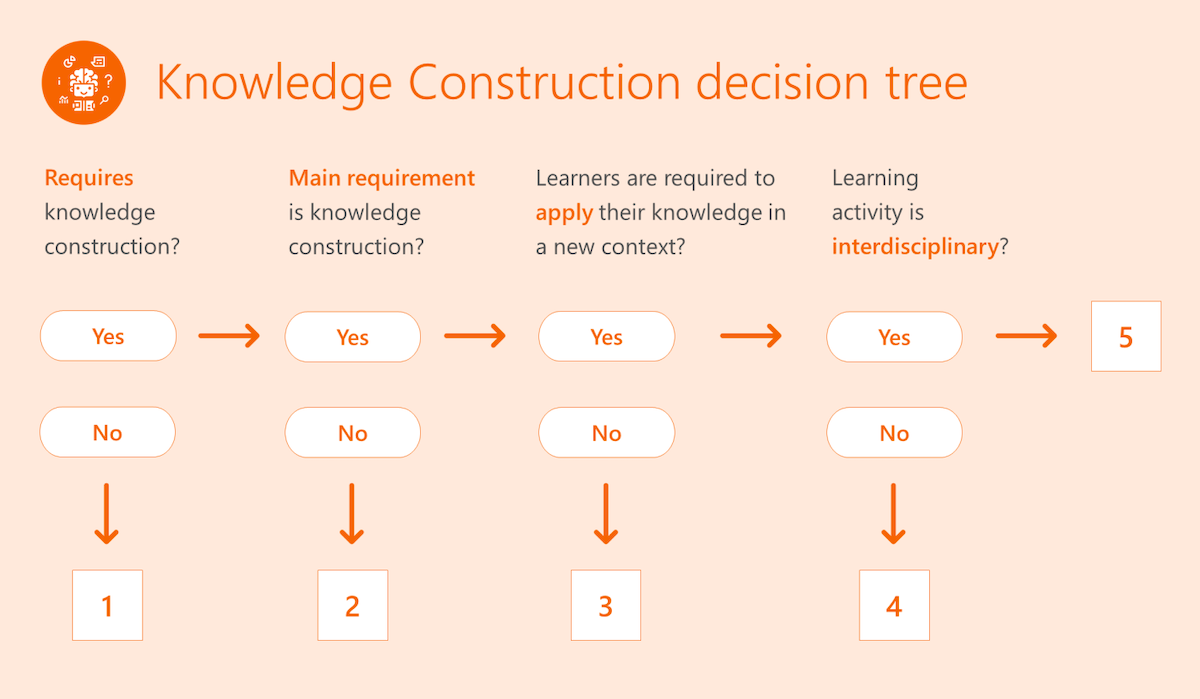Understand the 21CLD rubrics
To guide educators in creating effective learning activities, 21CLD provides a set of research-based rubrics for embedding 21st century skills in their teaching practices. To assess and design learning activities, educators simply consult the 21CLD rubrics and decision trees to determine whether an activity meets their learners’ current needs.
The rubrics capture the big ideas of each dimension and serve as a framework for activity design. The rubrics outline the criteria for each level of the dimension. Below, for example, is the Knowledge Construction rubric:

Go to Rubric – Knowledge Construction for an accessible version of this rubric.
This rubric spans from one to five and each number corresponds to a specific benchmark described in the chart. For example, to code a “two” in knowledge construction, the learning activity must require students to construct knowledge, but knowledge construction is NOT the main requirement.
The decision trees are a visual way of breaking the big ideas of each dimension down with simple “yes” or “no” questions. These questions promote awareness of the type and level of the skills being incorporated into an activity. Below, for example, is the Knowledge Construction decision tree:

Go to Decision Tree – Knowledge Construction for an accessible version of this decision tree.
If educators answer “yes” to a question, they move on to the next question. If they answer “no”, they do not progress further and code the activity with the corresponding number. By thoughtfully considering these questions, educators are better able to design meaningful and useful activities based on their learners’ current needs.
Both tools serve the same purpose: to provide a framework for integrating 21CLD dimensions into learning design, and educators may use the tool that works best for them.
The specialized terms and concepts contained in the rubrics and decision trees have been specially developed and defined for the 21CLD curriculum. By completing this learning path, educators develop a common language for discussing 21CLD with each other, making it easier to discuss and collaborate in learning design across all disciplines and levels.
The numbering system in the 21CLD rubrics and decision trees are codes—not scores. Coding a “one” on a learning activity merely indicates that learners are not using the 21CLD dimension in the learning activity. It is not a judgment on the value or quality of the activity.
While educators should strive to provide learning activities at all levels, it’s important to remember that not all learning activities need to code at the highest level.
For example, collaboration is a vital skill, but so is independence. Just as there are times in life when we need to solve our own problems, not all school projects warrant collaboration. Learners therefore need to practice and develop each of the following skills:
- Working independently
- Working together to make substantive decisions
- Working interdependently to produce one final product or achieve one end result
Deciding when and at which level to practice each skill depends on the desired learning outcomes and the current needs of the learners.
Throughout this learning path, we will explore and code anchor lessons for each dimension of 21CLD. Please note that anchor lessons are not intended to be examples of “perfect” lessons, because there is no such thing as the “perfect” lesson. The aim is a lesson that is right for your learners and their current stage of development.
The anchor lessons are real lessons used by real educators and were selected for the purpose of stimulating discussion around learning design. We refer to them as anchor lessons because they are used to help “anchor” our thinking around 21CLD dimensions. We aren't making judgments on these lessons but simply using them to demonstrate the process of determining if and at what level an activity incorporates the skill in question.